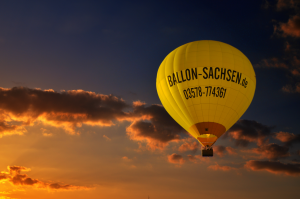- This topic is empty.
-
AuthorPosts
-
10/07/2025 at 11:08 #8216
When it comes to constructing or renovating a home, one of the most critical decisions homeowners face is selecting the right exterior material. The exterior of a house not only contributes to its aesthetic appeal but also plays a significant role in its durability, energy efficiency, and maintenance requirements. In this post, we will explore various materials available for home exteriors, weighing their pros and cons to help you make an informed decision.
1. Vinyl Siding: A Popular Choice
Vinyl siding has gained immense popularity due to its affordability and low maintenance requirements. Made from polyvinyl chloride (PVC), it is resistant to moisture, rot, and insects. Additionally, vinyl siding comes in a variety of colors and styles, allowing homeowners to achieve their desired look without the need for frequent painting.
Pros:
– Cost-effective and widely available
– Low maintenance and easy to clean
– Variety of styles and colorsCons:
– Can fade over time, especially in direct sunlight
– Not as durable as some other materials in extreme weather conditions2. Wood Siding: Timeless Elegance
Wood siding offers a classic and warm aesthetic that many homeowners desire. Available in various types, such as cedar, pine, and redwood, wood siding can be stained or painted to match any design preference. However, it requires regular maintenance to prevent rot, warping, and insect damage.
Pros:
– Natural beauty and versatility in design
– Good insulation propertiesCons:
– Requires regular maintenance (painting, staining)
– Susceptible to pests and weather damage3. Fiber Cement Siding: The Best of Both Worlds
Fiber cement siding has emerged as a strong contender in the exterior material market. Composed of cement, sand, and cellulose fibers, it mimics the appearance of wood but offers superior durability and resistance to fire, insects, and rot. Fiber cement is also available in various styles and colors, making it a versatile choice for homeowners.
Pros:
– Highly durable and low maintenance
– Resistant to fire, insects, and rot
– Available in various stylesCons:
– Higher initial cost compared to vinyl and wood
– Requires professional installation due to its weight4. Stucco: A Durable and Aesthetic Option
Stucco is a cement-based material that provides a unique texture and appearance. It is particularly popular in warmer climates due to its excellent insulation properties and ability to withstand extreme weather conditions. Stucco can be painted in various colors, allowing for customization.
Pros:
– Durable and weather-resistant
– Excellent insulation propertiesCons:
– Can crack over time if not properly installed
– Requires skilled labor for installation5. Brick and Stone: The Pinnacle of Durability
Brick and stone exteriors are synonymous with durability and timeless beauty. These materials require minimal maintenance and can last for decades, if not centuries. They offer excellent insulation and are resistant to fire and pests.
Pros:
– Extremely durable and low maintenance
– Excellent insulation properties
– Timeless aesthetic appealCons:
– Higher upfront costs
– Limited design flexibility compared to other materials6. Metal Siding: A Modern Solution
Metal siding, often made from aluminum or steel, is becoming increasingly popular due to its modern aesthetic and durability. It is resistant to fire, pests, and rot, making it a practical choice for many homeowners. Metal siding can also be painted in various colors, providing design flexibility.
Pros:
– Highly durable and low maintenance
– Resistant to fire and pests
– Modern aesthetic appealCons:
– Can be prone to denting
– Higher initial cost compared to vinylConclusion: Making the Right Choice
Choosing the best material for the exterior of your home depends on various factors, including your budget, climate, and personal aesthetic preferences. Each material has its unique advantages and disadvantages, and understanding these can help you make an informed decision. Whether you prioritize durability, maintenance, or aesthetic appeal, there is an exterior material that will meet your needs and enhance the beauty of your home.
-
AuthorPosts
- You must be logged in to reply to this topic.



